
A brief history of Britain's royal mourning dress codes
The Queen has eschewed her normally colorful outfits for somber, all-black apparel during the two-week mourning period for her husband, Prince Philip, Duke of Edinburgh, who died April 9.
And, as is customary, the entire royal family will follow a stringent dress code when the duke is laid to rest on April 17, during the first royal funeral in the UK since the Queen Mother passed in 2002.
Women will wear black knee-length day dresses and formal hats while men will dress in black morning coats with medals, according to a spokesperson from Buckingham Palace. (In a break from tradition, no family members will be in military uniform, averting a potential dilemma, as Prince Harry was stripped of his titles when he stepped down from royal duties).
Even in times of grief, close attention is paid to how royal family members interpret dress codes, which date back hundreds of years and have shifted over time.
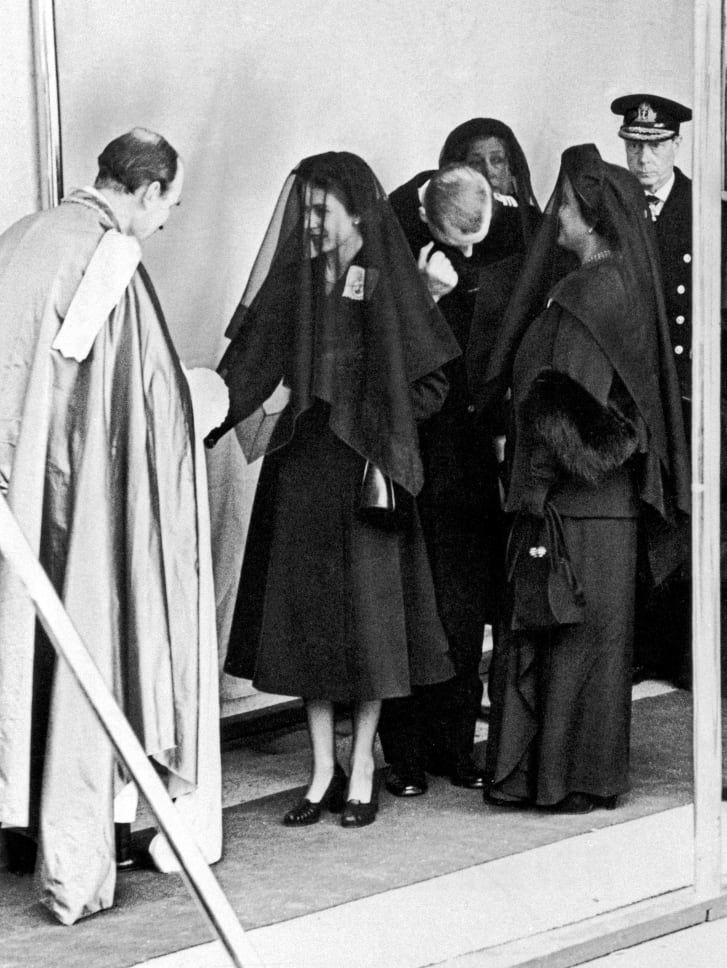 The royal funeral dress code has long been a symbol of grief and
propriety. Elizabeth II wore a long veil following the passing of her
father, King George VI.
The royal funeral dress code has long been a symbol of grief and
propriety. Elizabeth II wore a long veil following the passing of her
father, King George VI.
In 1982, widely seen photos of Princess Diana at the funeral of actress and Princess of Monaco Grace Kelly's show the newly wedded royal in a veiled straw hat, collared long-sleeve black dress and heart necklace -- an appropriate choice that still showed her inherent sense of style.
"(Princess Diana had) that sense of having an eye to what the public expects, and just knowing how to strike the right note," said British fashion historian and curator Kate Strasdin in a video interview.
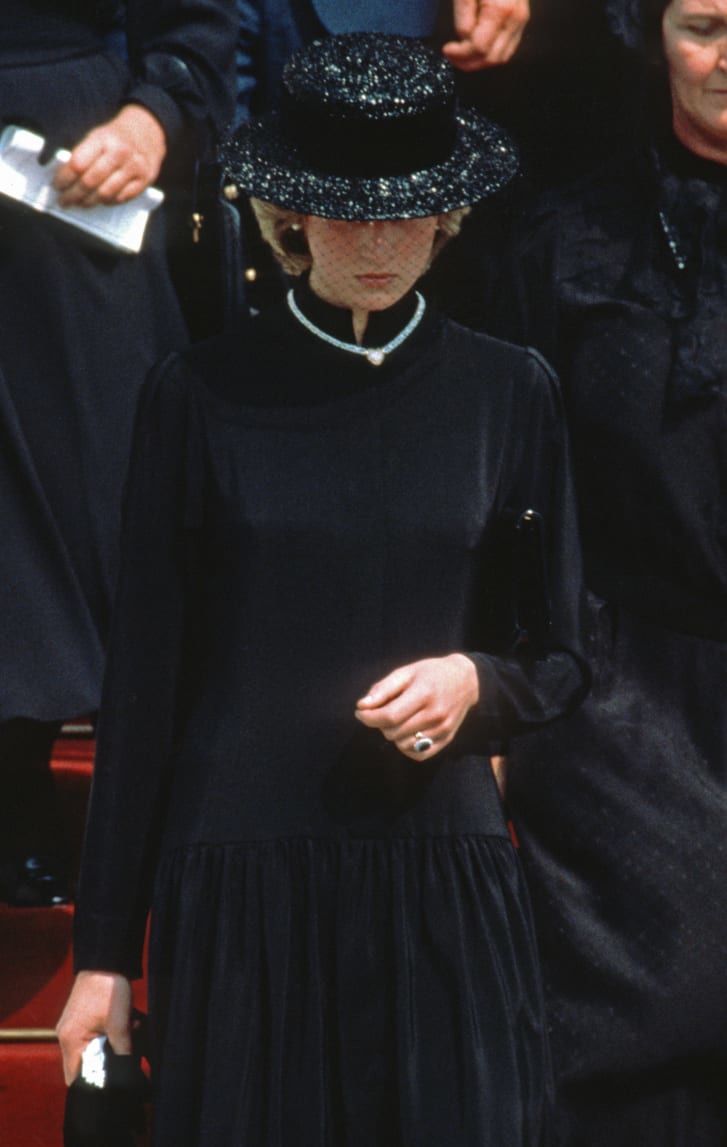 Diana, Princess of Wales, at the funeral of Princess Grace of Monaco on September 18, 1982
Diana, Princess of Wales, at the funeral of Princess Grace of Monaco on September 18, 1982
Taken during the Princess of Wales' own funeral in 1997, the heartbreaking image of Prince Philip, Prince William, Diana's brother Charles Spencer, Prince Harry and Prince Charles walking behind the coffin in dark suits is one of the most referenced photos in contemporary royal history and emblematic of modern royal funeral attire. Nicole Kidman and Elton John were among the celebrities who duly abided by the all-black and formal dress code to pay their respects during a funeral watched by millions around the world.
'A visual symbol of grief'
Though black has long been the color of choice for mourning -- it was popular among the wealthy during the Middle Ages -- it became ubiquitous with grief in the 19th century.
According to Strasdin, it was during this period in Europe and America that mourning dress codes took hold, particularly for women, bolstered by the rise of women's publications as well as more affordable clothes. (Harper's Bazaar, for example, advised readers to aim for a "nun-like simplicity" in 1868.)
Even the modern department store was born from the nascent funeral industry. Around the 1840s, Strasdin said, the "massive emporiums" that cropped up in London and Paris were meant to serve as a single stop for funerary needs.
"Under one roof, you could acquire everything from stationery to the mourning jewelry," she said.
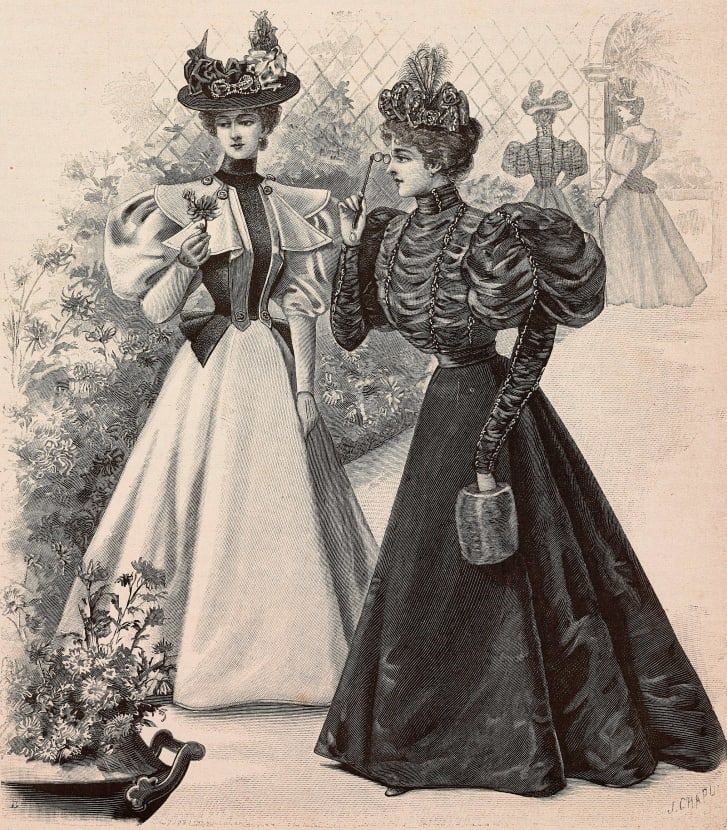 Women wearing a drap-velours dress and a half-mourning dress. The modern
department store was born from the popularity of mourning styles.
Women wearing a drap-velours dress and a half-mourning dress. The modern
department store was born from the popularity of mourning styles.
A person's mourning style "served as a visual symbol of grief... while simultaneously demonstrating the wearer's status, taste and level of propriety," noted the introductory text to the 2014 exhibition "Death Becomes Her: A Century of Mourning Attire" at the Metropolitan Museum of Art.
The etiquette author D.C. Colesworthy had a cheekier take on the trend in his 1867 book "Hints of Common Politeness," as quoted in the Met exhibition.
"When we see ladies persist in wearing sable, we are reminded of the reply a young widow made to her mother: 'Don't you see,' said she, 'it saves me the expense of advertising for a husband," he wrote.
Black was briefly retired in 1938, following the death of Queen Elizabeth II's grandmother, the Countess of Strathmore. A photograph shows the Queen Mother wearing a white dress designed by Norman Hartnell to honor her mother's passing. The concept of "white mourning" followed the example of Mary, Queen of Scots, who was painted in a white mourning dress after she lost multiple family members in the 16th century.
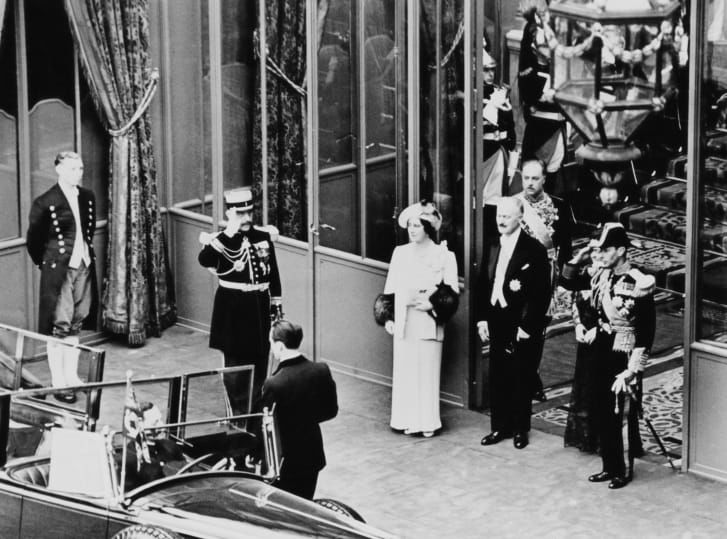 The Queen Mother broke with tradition following her own mom's passing in
1938, wearing mourning styles called the "white wardrobe" designed for
her by Norman Hartnell.
The Queen Mother broke with tradition following her own mom's passing in
1938, wearing mourning styles called the "white wardrobe" designed for
her by Norman Hartnell. The 'perpetual widow'
But no one had more influence on mourning attire than Queen Victoria. Following her husband Prince Albert's unexpected death in 1861, the monarch very publicly expressed her sorrow by wearing black every day for four decades until her own death. It was Victoria who helped codify the nuances of grief fashion and maintained her identity as the "perpetual widow," according to Strasdin.
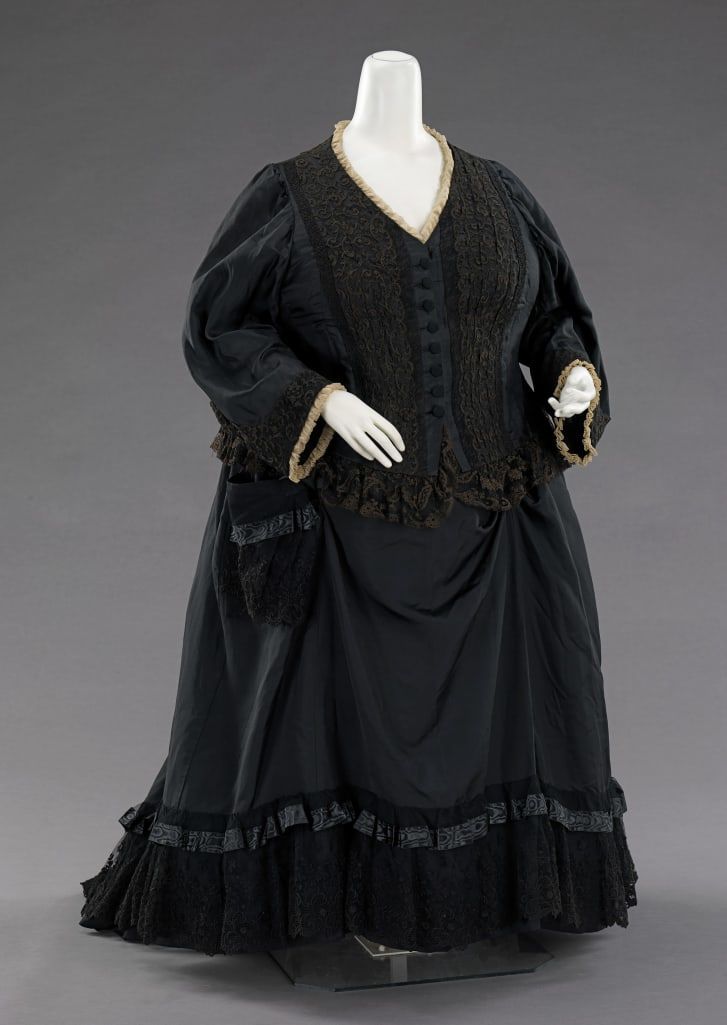 A half-mourning dress worn by Queen Victoria 33 years after Albert's death.
A half-mourning dress worn by Queen Victoria 33 years after Albert's death.
In the Victorian era, "even really small details of dress indicating what stage of mourning you're in became really important," Strasdin explained. It showed wealth and status to be able to afford an entire mourning wardrobe, as well as society know-how to understand all of the rules.
For a year and a day, widows were expected to wear full mourning attire, known as "widow's weeds," which consisted of matte black crepe fabric with no embellishments, according to Strasdin. As one's grief faded, colors and other fabrics could be slowly reintroduced. Finally, for the last six months of the two-and-a-half-year period, "half mourning" garments could be worn in white, gray, pale yellow or shades of lilac or lavender. Sometimes they were a vibrant purple -- the exhibition "Death Becomes Her" displayed one such gown of wool twill and silk velvet, with bold shoulders, black trim and intricate white and gold detailing.
Though it was customary to return to a normal wardrobe following the years-long grieving period, Queen Victoria persisted in wearing black mourning outfits for the rest of her life. As "Death Becomes Her" showed, one of Victoria's dresses from 1894 -- 33 years after Albert's death -- was a somber black crepe gown with a simple trim.
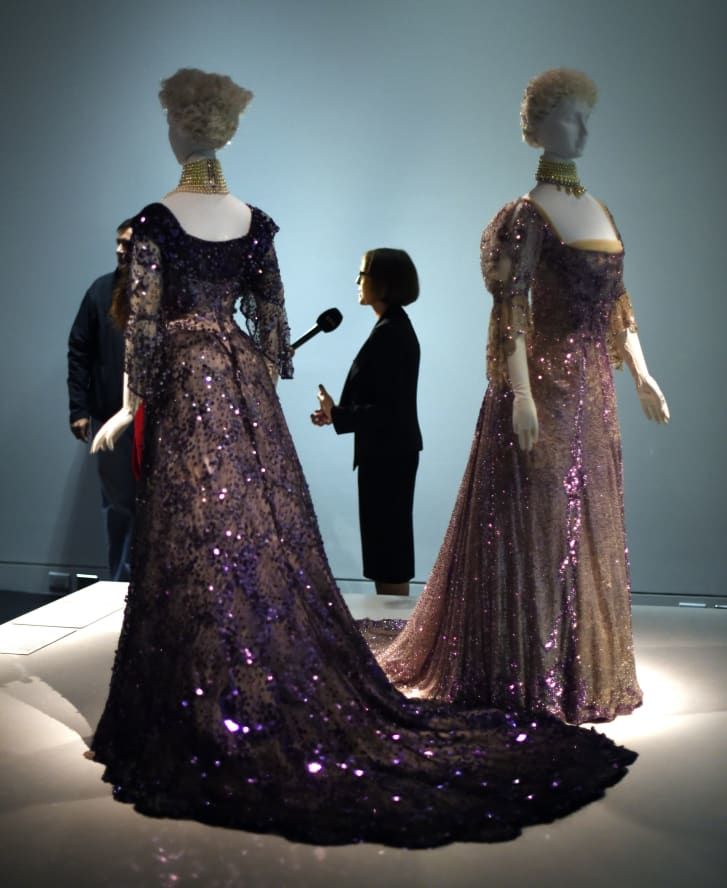 The stages of grief were indicated by fabric choice, color and
adornment. Queen Alexandra purposefully loosened the rigid codes for
mourning attire set under Victoria.
The stages of grief were indicated by fabric choice, color and
adornment. Queen Alexandra purposefully loosened the rigid codes for
mourning attire set under Victoria.
Victoria's eternal show of grief was unpopular with her subjects as it encouraged a more rigid dress code, Strasdin notes. Her daughter-in-law, Queen Alexandra, marked a shift, loosening restrictions when Queen Victoria passed and after her own eldest son died. Alexandra opted for glittering half-mourning gowns of mauve silk chiffon and sequins, as well as pale yellows and grays.
"She knew that the public had really struggled with Victoria's continual mourning," Strasdin said. "So Queen Alexandra adopted half-mourning for the rest of her life, because she knew that to go into full mourning would really not have been a popular public choice."
Over the decades, the impractically-long mourning wardrobe traditions went out of style, but Victoria's influence is still present in modern royal mourning periods, from the austere colors to the rigid adherence to dress codes. "In spite of the changes, I think the 19th century still looms large," Strasdin said.











